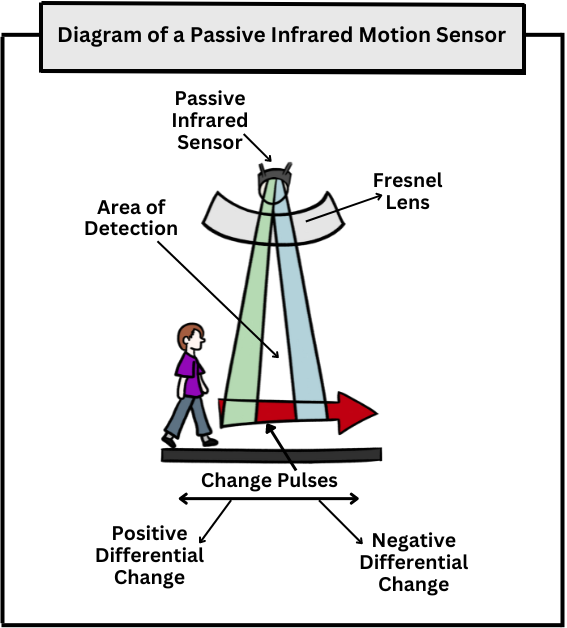A motion sensor unit is used to monitor an area and transmit an alert when movement occurs. Present-day motion sensors have a range of applications, spanning from security to energy conservation in light bulbs. To achieve this, the motion sensor unit may incorporate passive infrared sensors.
Passive infrared detects temperature by searching for infrared light through heat emission. All objects emit some form of heat, allowing the detector to utilize this thermal information to discern changes via infrared radiation.
Motion sensor units utilizing passive infrared prove effective in both dim and well-lit environments. They offer high utility because they can differentiate thermal information from animals, humans, and objects.
At Dexter Research Center, emphasis is placed on high-performance infrared technology. If you are in search of a motion sensor unit utilizing passive infrared, explore the presence sensor available among the specialty items.
How Does Passive Infrared Work in Motion Sensor Units?

Image Credit: Dexter Research Center, Inc.
A passive infrared sensor works effectively when a motion sensor is designed with two components, each housing a material that safeguards the sensor and responds to infrared radiation. Additionally, a lens is employed to enhance the sensor's overall focus.
When the environment remains stable and motionless, passive infrared sensors remain inactive, detecting a balanced level of infrared, often emanating from furniture or interior objects.
However, when movement originates from a heat source, passive infrared sensors detect it. As a person passes by the initial sensor, a temperature rise occurs, known as a positive differential change.
As the person departs, the temperature decreases, termed a negative differential change, triggering an alert signal.
Can Passive Infrared Sensors Help Motion Sensor Technology?
Passive infrared has the potential to enhance motion sensor technology across various industries. In security applications, passive infrared motion sensors prove valuable for entry and exit control, making them suitable for integration into security lighting circuits or alarm systems.
Additional benefits include:
- Ease of use in internal, external, dark or light environments.
- Creating bespoke control patterns.
- Utilizing movement rather than a position to provide a security risk alert.
- Only a small amount of energy used when idle.
- Acting non-invasive as it does not retain personal data.
Where Else Can You Use Passive Infrared Sensors?
A motion sensor unit utilizing passive infrared makes a valuable addition to entry and exit control systems. Typical applications of passive infrared technology and their benefits comprise:
- Automatic lights to ensure energy can be saved when rooms are not being used.
- Temperature control, including thermostats and thermometers, to save energy.
- Automatic doors to help people enter or leave a building and to maintain ventilation.
- Dispensers for soaps, toothpaste, and wipes to maintain hygiene.

Image Credit: Dexter Research Center, Inc.
The Motion Detector – Presence Sensor is Available at Dexter Research Center
Choosing the right security or motion detector is pivotal for your property. When in search of a motion sensor unit that incorporates passive infrared, the recommendation is to explore the Motion Detector – Presence Sensor offered by Dexter Research Center.
The Presence Sensor provides sensing capabilities of up to two feet and can be readily customized for various applications.
The system proves versatile, cost-effective, and suitable for use in smart homes for temperature regulation, energy conservation, safety, and security. Please visit the specialty items page for further information.

This information has been sourced, reviewed and adapted from materials provided by Dexter Research Center, Inc.
For more information on this source, please visit Dexter Research Center, Inc.